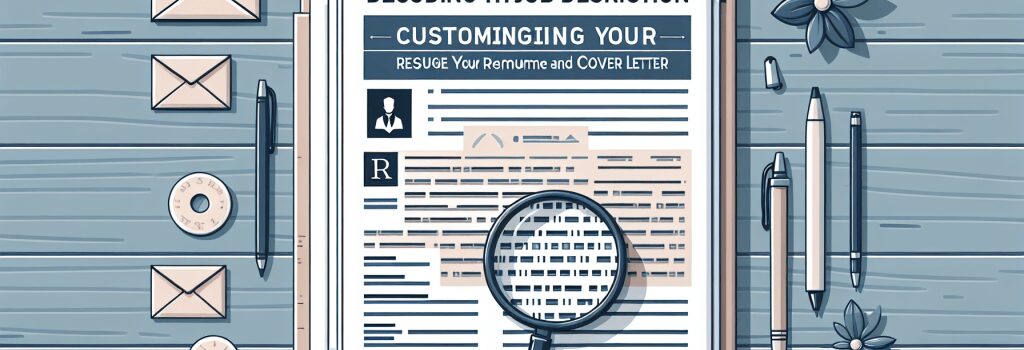Decoding the Job Description: Customizing Your Resume and Cover Letter

Crafting the perfect resume and cover letter tailored to a specific web development position can significantly elevate your chances of landing your dream job. Decoding the job description to customize your application is a crucial step in showcasing your skills and experience in alignment with the employer’s needs. In this comprehensive guide, we’ll walk you through the process of meticulously analyzing job descriptions and fine-tuning your resume and cover letter for web development roles, particularly those focusing on HTML, PHP, CSS, JS, and WordPress.
Understanding the Job Description
Before diving into customization, it’s essential to thoroughly understand the job description. Employers meticulously detail the skills, experiences, and competencies they’re looking for. Your first step should be to dissect these descriptions to identify key requirements.
Highlight Key Skills and Requirements
Look for specific technologies and frameworks mentioned, such as HTML, PHP, CSS, JavaScript (JS), and WordPress. Additionally, pay attention to soft skills like teamwork, communication, and problem-solving capabilities. Make a list of these keywords and phrases, as they will guide your customization process.
Customizing Your Resume
With a clear understanding of the job description, the next step is to tailor your resume to reflect the role’s demands.
Align Your Technical Skills
Ensure your technical skills section is a mirror reflection of the job requirements. If the role emphasizes WordPress development, your resume should prominently feature your WordPress projects and skills. Similarly, if there’s a focus on front-end technologies like HTML, CSS, and JavaScript, include specific projects and achievements that demonstrate your expertise in these areas.
<h4>Use Relevant Project ExamplesFor every requirement listed in the job description, try to match it with a corresponding project or experience in your resume. Describing how you developed a responsive website using HTML, CSS, and JavaScript or customized a WordPress theme for a client will provide tangible evidence of your capabilities.
Writing an Effective Cover Letter
Your cover letter provides an opportunity to narrate your professional journey and convince the hiring manager why you’re the ideal candidate for the position.
Connect Your Experience with Job Requirements
Use the cover letter to delve deeper into select projects mentioned in your resume. Describe the challenges, your approach, the technologies used (emphasizing the stack mentioned in the job description), and the outcomes. This approach not only showcases your technical skills but also demonstrates your problem-solving abilities and passion for web development.
<h4>Demonstrate Your Understanding of the CompanyResearch the company and integrate your findings into your cover letter. Drawing parallels between the company’s goals and how your skills and experiences can contribute demonstrates a genuine interest and proactive attitude.
Conclusion
Tailoring your resume and cover letter according to the job description is not just about matching skills and experiences. It’s about telling a compelling story of how your professional journey aligns with the role and the company’s mission. By taking the time to customize your application, you significantly increase your chances of advancing to the interview stage, setting the stage for a successful career in web development.
Remember, whether you’re crafting applications for positions requiring proficiency in HTML, PHP, CSS, JS, or WordPress, the key is to clearly communicate how your skills and experiences meet the employer’s needs. Decoding the job description and personalizing your application materials accordingly will set you apart in a competitive job market.


